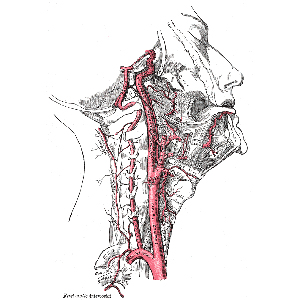Gender differences in the detection of carotid atherosclerosis: DUPLEX registry cross-sectional study results

Submitted: October 18, 2021
Accepted: January 22, 2022
Published: February 7, 2022
Accepted: January 22, 2022
Abstract Views: 1361
PDF: 571
Publisher's note
All claims expressed in this article are solely those of the authors and do not necessarily represent those of their affiliated organizations, or those of the publisher, the editors and the reviewers. Any product that may be evaluated in this article or claim that may be made by its manufacturer is not guaranteed or endorsed by the publisher.
All claims expressed in this article are solely those of the authors and do not necessarily represent those of their affiliated organizations, or those of the publisher, the editors and the reviewers. Any product that may be evaluated in this article or claim that may be made by its manufacturer is not guaranteed or endorsed by the publisher.
Similar Articles
- Elio Gorga, Marta Scodro, Francesca Valentini, Renzo D'Ortona, Mariachiara Arisi, Edoardo Sciatti, Ivano Bonadei, Valentina Regazzoni, Enrico Vizzardi, Marco Metra, Piergiacomo Calzavara Pinton, Echocardiographic evaluation of diastolic dysfunction in young and healthy patients with psoriasis: A case-control study , Monaldi Archives for Chest Disease: Vol. 88 No. 3 (2018)
- Gian Francesco Mureddu, Current multivariate risk scores in patients undergoing non-cardiac surgery , Monaldi Archives for Chest Disease: Vol. 87 No. 2 (2017)
- Gian Francesco Mureddu, Pompilio Faggiano, Fausto Rigo, Cardiovascular risk prediction in the real world. The discouraging evidences coming from literature , Monaldi Archives for Chest Disease: Vol. 78 No. 4 (2012): Cardiac series
- Pierfranco Terrosu, Aspirin use for primary prevention in elderly patients , Monaldi Archives for Chest Disease: Vol. 84 No. 1-2 (2015): Cardiac series
- S. Kalaboka, J.P. Piau, G. King, D. Moreau, M. Choquet, I. Annesi-Maesano, Sex and gender differences in tobacco smoking among adolescents in French secondary schools , Monaldi Archives for Chest Disease: Vol. 69 No. 3 (2008): Pulmonary series
- Concezione Tommasino, Cardiovascular risk assessment in the senior population undergoing anesthesia for non-cardiac surgery , Monaldi Archives for Chest Disease: Vol. 87 No. 2 (2017)
- Abhijeet Singh, Rajendra Prasad, Rajiv Garg, Surya Kant, Giridhar B. Hosmane, Abhisek Dubey, Abhisek Agarwal, Ram Kishun Verma, A study to estimate prevalence and risk factors of Obstructive Sleep Apnoea Syndrome in a semi-urban Indian population , Monaldi Archives for Chest Disease: Vol. 87 No. 1 (2017)
- Francesco Giallauria, Valentina Battimiello, Mariagrazia Veneziano, Paolofabrizio De Luca, Ilenia Cipollaro, Maria Buonincontro, Carlo Vigorito, Domenico Del Forno, Psychosocial risk factors in cardiac practice , Monaldi Archives for Chest Disease: Vol. 68 No. 2 (2007): Cardiac series
- Pompilio Faggiano, Pier Luigi Temporelli, Giovanni Zito, Francesco Bovenzi, Furio Colivicchi, Francesco Fattirolli, Cesare Greco, Gianfrancesco Mureddu, Carmine Riccio, Marino Scherillo, Massimo Uguccioni, Giacomo Faden, Cardiovascular Risk Profile and Lifestyle Habits in a Cohort of Italian Cardiologists. Results of the SOCRATES Survey , Monaldi Archives for Chest Disease: Vol. 80 No. 3 (2013): Cardiac series
- Enrico Vassallo, Francesca Musella, Susanna Mosca, Laura Casaretti, Roberto Formisano, Giacomo Mattiello, Ada Bologna, Irma Fabiani, Francesco Gambardella, Laura Petraglia, Giuseppe Rengo, Dario Leosco, Pasquale Perrone-Filardi, Clinical and therapeutic value of carotid intima-media thickness , Monaldi Archives for Chest Disease: Vol. 76 No. 3 (2011): Cardiac series
You may also start an advanced similarity search for this article.

 https://doi.org/10.4081/monaldi.2022.2128
https://doi.org/10.4081/monaldi.2022.2128





